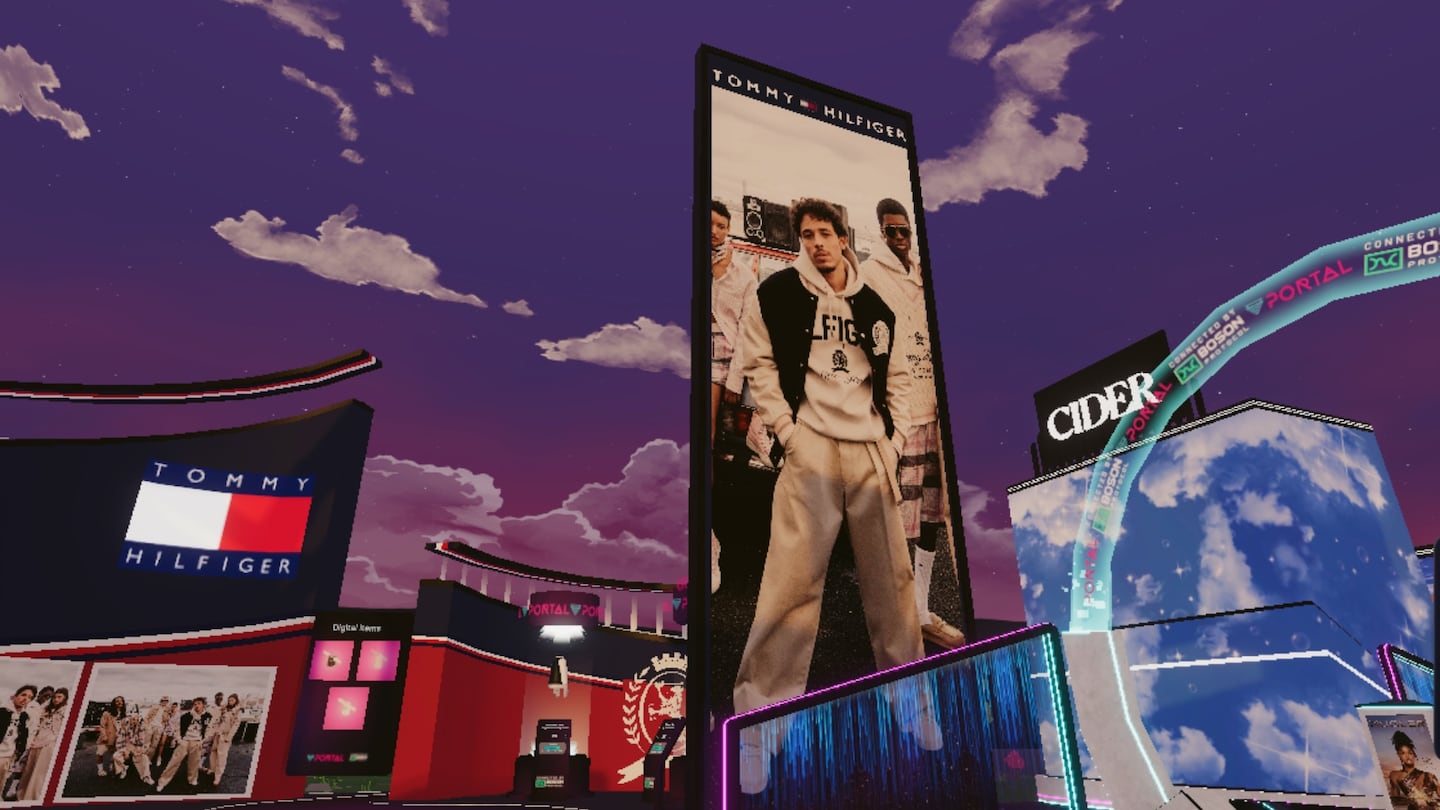
The Business of Fashion
Agenda-setting intelligence, analysis and advice for the global fashion community.

Agenda-setting intelligence, analysis and advice for the global fashion community.

For the last two years, fashion brands have unleashed a steady drip of metaverse experiments and experiences. Virtual fashion shows helped brands both big and small grab attention early in the pandemic, and operators of virtual worlds such as Fortnite, Roblox and Minecraft announced collaboration after collaboration. Brands have named executives to head up metaverse strategy.
Fashion hasn’t abandoned its obsession with virtual reality: Tommy Hilfiger’s September fashion show had a metaverse component, and Burberry will launch a Minecraft world in November. But there’s no denying that the pace of announcements has slowed. Fortnite hasn’t announced any new fashion collaborations this year. Many of those Roblox worlds are updated sporadically, if at all, and even on a busy day, see only dozens of users.
There’s no bigger symbol of the technology’s growing pains than Facebook parent Meta, which reports quarterly results on Wednesday. The company has positioned itself as the metaverse’s biggest champion, but has struggled to convince its billions of users to log on amid a seemingly endless storm of bad press. Recent reporting from The Verge, The Wall Street Journal, The New York Times and others has painted a picture of empty virtual worlds that even Meta’s own employees have yet to embrace, as well as the usual issues with harassment and content moderation that come with any online platform. Meta continues to add new brands and items to its avatar store, which includes outfits designed by Balenciaga and Prada. But it’s not clear how many people are buying them, or can even find it.
Fashion brands have often met a similar reaction to their metaverse experiments, albeit on a smaller scale. Critics and ordinary consumers complain the clothes sent down those virtual runways are ugly. The process to create a virtual avatar can be confusing for new users, and it’s not always clear what you’re supposed to do with your mini-me once you create them.
ADVERTISEMENT
The cooling economy is another impediment. All but the most innovative brands are at least five years away from the metaverse contributing meaningfully to revenue, according to the State of Fashion: Technology report put out earlier this year by The Business of Fashion and McKinsey & Co. That’s a long time to wait, especially when borrowing costs are rising fast and companies are worried about ensuring cash flow to make it through an impending recession.
It’s easy to be cynical about the metaverse. Some high profile projects are troubled, but the underlying concepts are slowly working their way into the fashion mainstream. Young consumers may be ignoring Meta’s Horizon Worlds, but they spend much of their time in the virtual worlds of Fortnite, Minecraft and Roblox. Roblox recently rolled out sleeker graphics that could make it easier for brands to release compelling content. Luxury brands, which are still reporting record sales and profits despite the worsening economic outlook, have plenty of resources to make available to their new chief metaverse officers.
Meta isn’t giving up either, and even incremental successes there will create enormous opportunities for fashion. Perhaps we’ll learn more on Wednesday.
Monday
Diwali holiday
The Bond Street Elizabeth line station opens, further linking London’s luxury shopping district to the city’s mass transit
Deadline for UK Prime Minister candidates to secure support from Tory MPs
Tuesday
ADVERTISEMENT
The Conference Board releases its October reading of US consumer confidence
Wednesday
VF Corp. and Meta report quarterly results
Gymshark opens its first store, in London
Thursday
Shopify reports results
Initial estimate for US 3Q GDP released
Friday
ADVERTISEMENT
“Forever Valentino,” an exhibition showcasing the brand’s couture, opens in Doha, Qatar
The Week Ahead wants to hear from you! Send tips, suggestions, complaints and compliments to brian.baskin@businessoffashion.com.
The nature of livestream transactions makes it hard to identify and weed out counterfeits and fakes despite growth of new technologies aimed at detecting infringement.
The extraordinary expectations placed on the technology have set it up for the inevitable comedown. But that’s when the real work of seeing whether it can be truly transformative begins.
Successful social media acquisitions require keeping both talent and technology in place. Neither is likely to happen in a deal for the Chinese app, writes Dave Lee.
TikTok’s first time sponsoring the glitzy event comes just as the US effectively deemed the company a national security threat under its current ownership, raising complications for Condé Nast and the gala’s other organisers.